
Art Gharana — 9 Mins read
Top Dance Moves to Impress Friends
Dance
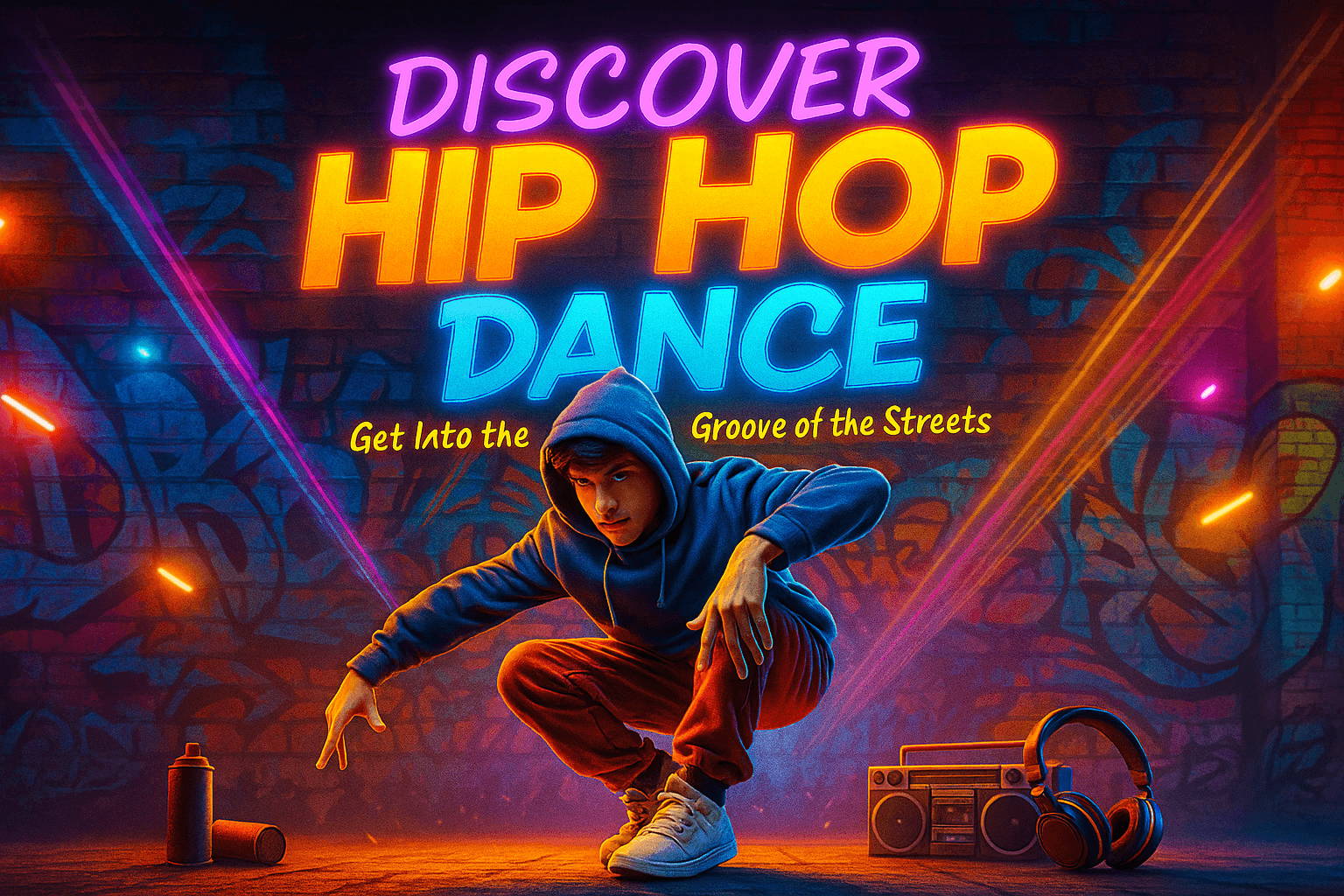 Ever found yourself grooving to a beat, mimicking the smooth flow of a hip hop dancer on screen, and wondering how they make it look so effortless? You’re not alone. Hip-hop dance has captured hearts across the globe with its raw energy, cultural depth, and expressive dance moves in hip hop that speak louder than words. But what exactly is hip hop dance? Where did it come from? And more importantly—can you learn it too?
Ever found yourself grooving to a beat, mimicking the smooth flow of a hip hop dancer on screen, and wondering how they make it look so effortless? You’re not alone. Hip-hop dance has captured hearts across the globe with its raw energy, cultural depth, and expressive dance moves in hip hop that speak louder than words. But what exactly is hip hop dance? Where did it come from? And more importantly—can you learn it too?
Born in the vibrant streets of the Bronx, hip hop dance isn’t just a series of movements; it’s a lifestyle, a voice, and a form of storytelling. From iconic 1980’s dance steps to today’s freestyle dance battles, the style has evolved while staying true to its roots. Whether you're fascinated by its history, curious about simple hip hop moves, or ready to explore a new passion, this blog is your gateway into the dynamic world of hip-hop dance.
So, if you’ve ever asked, “How do I start dancing hip hop?” — stick around. We’ll break down its origins, dive into its signature moves, and give you a practical path to begin your journey. Let’s move to the rhythm and discover what makes hiphop dance a global cultural phenomenon.
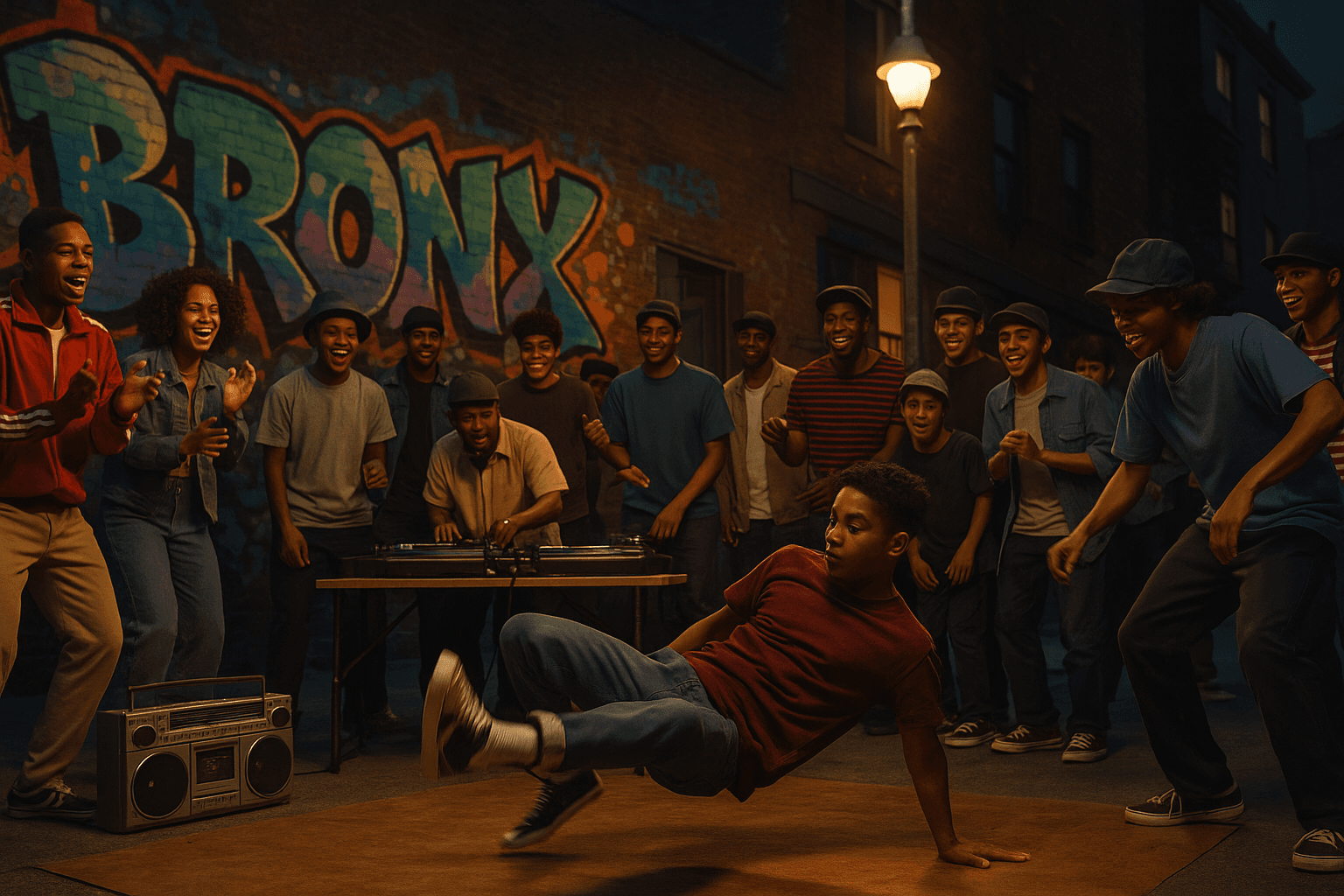 When you think of hip hop dance, what comes to mind? Explosive energy? Rhythmic beats? Street-style flair? While the moves might feel spontaneous and raw, the roots of hip-hop dance run deep—grounded in a powerful cultural movement that began not in fancy studios but on concrete streets.
When you think of hip hop dance, what comes to mind? Explosive energy? Rhythmic beats? Street-style flair? While the moves might feel spontaneous and raw, the roots of hip-hop dance run deep—grounded in a powerful cultural movement that began not in fancy studios but on concrete streets.
The story of hip hop dance begins in the 1970s Bronx, New York, during a time of social unrest, poverty, and vibrant creativity. Here, young people used music, art, and movement to express their realities and resist limitations. Dance was more than fun—it was freedom.
This is where the five pillars of hip hop—DJing, MCing (rapping), graffiti, knowledge, and **breakdancing (or B-boying)—emerged. Dance was the visual rhythm to the music, giving voice to the beats through motion.
As hip hop evolved through the 1980s, so did the dance. Influences from funk, soul, and street performance birthed classic 1980’s dance steps like:
These weren’t just “cool moves”; they were acts of resistance, celebration, and identity. Dance movements in hip hop became a defining language of youth culture, spreading from block parties to global stages.
Dance isn’t a separate element—it's the heartbeat of hip hop culture. The five elements of hip hop work together to create a complete ecosystem of expression, and hip hop dancers became storytellers using rhythm, posture, and motion.
What made this movement so unique? It welcomed everyone. There were no auditions—just passion. Whether you were popping in LA or breaking in New York, hip-hop dance was a universal dialect of raw creativity.
Unlike traditional forms of dance with fixed choreography, hip hop dance celebrates freestyle—a spontaneous reaction to music. It’s adaptable, expressive, and community-driven. Some of the key characteristics of this style include:
As you continue reading, you’ll discover how these roots influence today’s hip hop dance steps—and how you can start learning them, even if you're brand new.
Ready to step into the beat? Let’s break down the moves that made hip hop legendary.
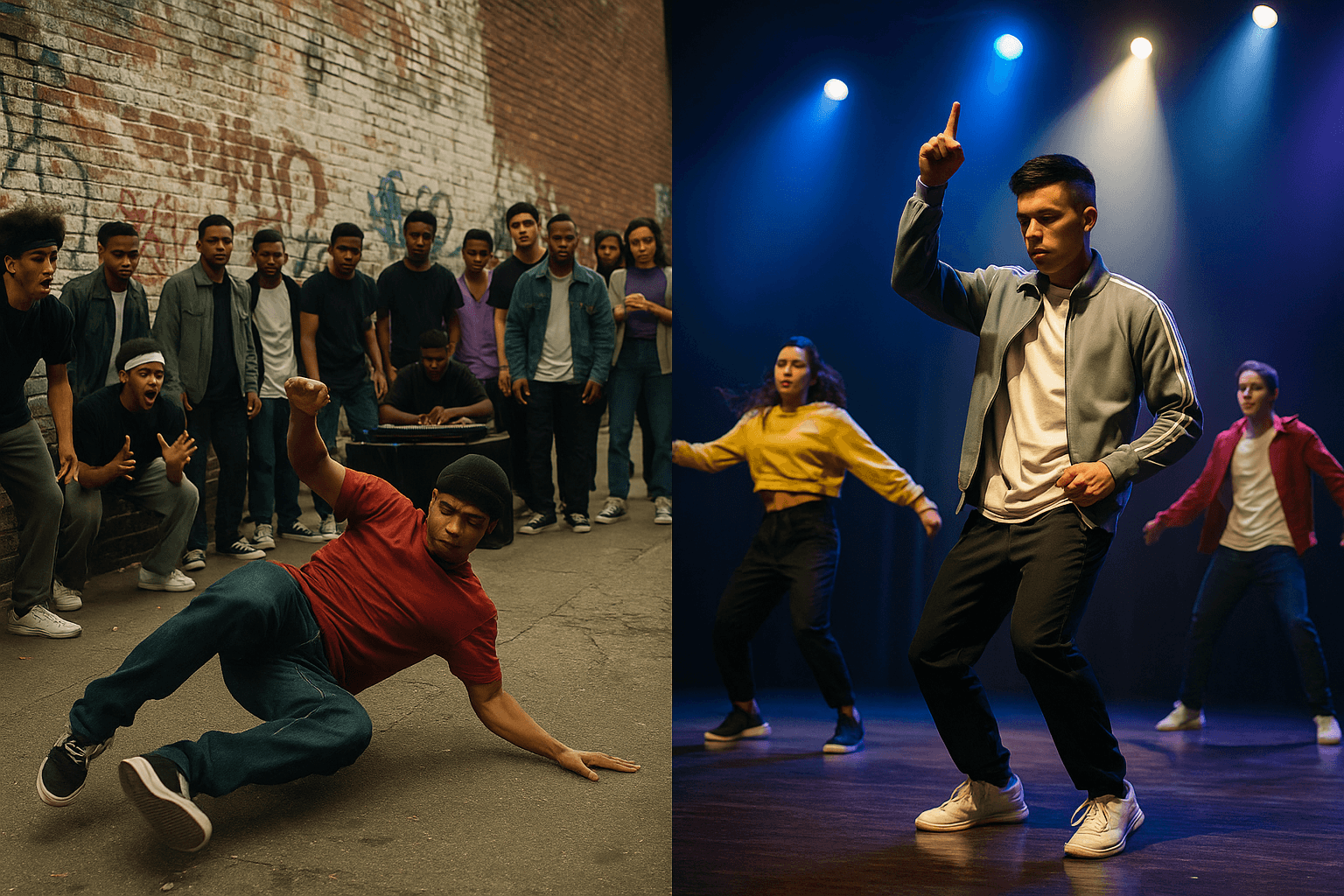 Hip hop has always been about growth, transformation, and self-expression. But did you know that hip hop dance styles have evolved just as dynamically as the music itself? From the gritty corners of inner-city neighborhoods to polished global stages, the journey of hip-hop dance is a story of adaptability and innovation.
Hip hop has always been about growth, transformation, and self-expression. But did you know that hip hop dance styles have evolved just as dynamically as the music itself? From the gritty corners of inner-city neighborhoods to polished global stages, the journey of hip-hop dance is a story of adaptability and innovation.
Let’s start with the three styles that laid the foundation for hip hop dance:
Breaking (or B-boying/B-girling) Originating in the Bronx, this style includes footwork, freezes, and power moves performed close to the ground. It’s raw, acrobatic, and intensely rhythmic.
Locking Born on the West Coast, locking features exaggerated hand and arm movements, “locking” into place at specific points. It's funky, playful, and full of character.
Popping This style focuses on quickly contracting and relaxing muscles to create a jerking effect known as a “pop.” Often combined with robotic or fluid body rolls, it emphasizes musicality and control.
These styles of dance hip hop aren’t just techniques—they’re stories. Each one reflects a different region, cultural influence, and creative spirit that helped define hip-hop dance as a movement.
One of the most celebrated aspects of dancing hip hop is freestyle. Unlike traditional dance genres with set choreography, freestyle is about responding to the music in real-time. It’s the soul of street battles and the highlight of cyphers.
Here’s why freestyle is so powerful:
So, when someone talks about freestyle dance in hip hop, they're really talking about unfiltered emotion in motion.
As hip hop entered the mainstream, so did its dance. Music videos in the ’90s and 2000s popularized moves like the Moonwalk, Dougie, and Crank That, introducing hip hop dance styles to a wider audience.
But with fame came a shift—technique sometimes took a back seat to trend. Today’s hip hop dance moves, influenced by viral challenges and commercial choreography, often blend old-school foundations with pop-culture relevance.
Still, many dancers strive to honor the roots while embracing modern flair, keeping the balance between evolution and authenticity.
From Japan’s “Tokyo style” to France’s “new style,” hip hop dance has transcended its American origins to become a global art form. These international interpretations add new layers to the style while respecting its original essence.
You’ll now find:
This global growth proves one thing: hip hop dance form isn’t just a trend—it’s a universal language.
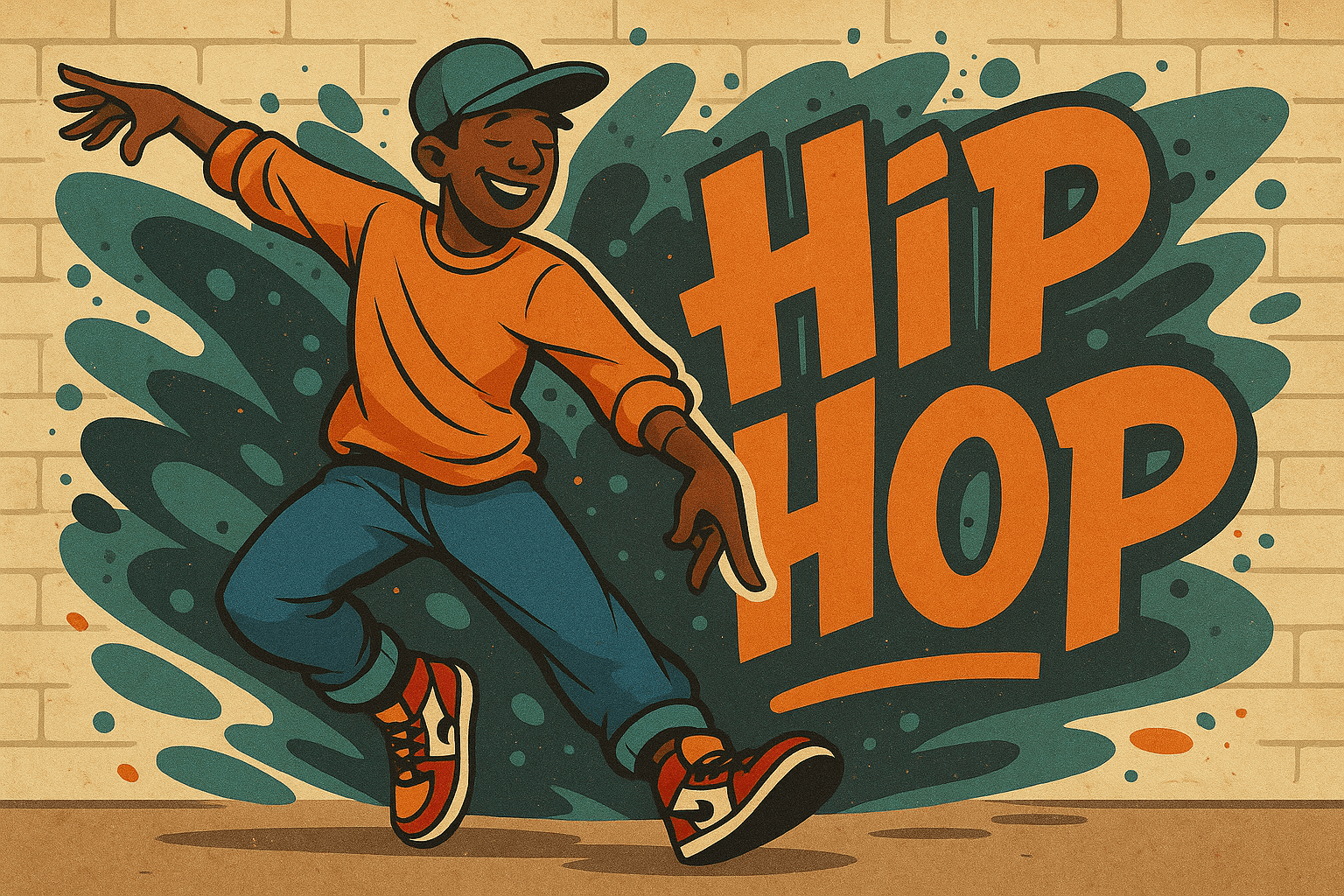 Ever watched a hip hop dancer and thought, “How do they make it look so smooth?” The secret lies in mastering a few iconic hip hop dance steps that form the backbone of most routines. The great thing? You don’t need years of experience to start learning—just passion, rhythm, and a willingness to move.
Ever watched a hip hop dancer and thought, “How do they make it look so smooth?” The secret lies in mastering a few iconic hip hop dance steps that form the backbone of most routines. The great thing? You don’t need years of experience to start learning—just passion, rhythm, and a willingness to move.
Whether you’re learning solo or in a class, starting with the basics helps you build rhythm, coordination, and confidence. Here are some basic hip hop dance moves that anyone—even total beginners—can try:
The Two-Step A simple side-to-side movement that builds musicality and timing.
The Bounce It’s not flashy, but it sets the groove. This move helps you feel the beat in your body.
The Dougie A fun, laid-back move that uses arm waves and body rolls.
The Step Touch Great for transitions, it teaches balance and smooth motion.
These moves aren’t just easiest hip hop dance moves—they’re essential stepping stones to more advanced styles.
Not ready for backflips or freezes? That’s okay. Start with simple hip hop moves that still pack a punch:
What makes these moves fun is their flexibility—you can use them in freestyle dance sessions or choreographed routines. Plus, they help you develop your own groove.
Many hip hop dance moves names are inspired by pop culture, personalities, or the emotions they convey. Recognizing them helps you better understand the evolution of style:
Learning these moves connects you to the roots of hip-hop dance, giving more meaning to your movement.
The progression of hip hop dance moves tells a story of creativity and evolution:
Each decade introduced trends, viral sensations, and new spins on foundational styles. Want to keep up? Stay curious and keep practicing.
Once you know a handful of moves in hip hop, you’ll notice patterns in choreography. Most routines combine:
These elements make hip hop feel alive—whether you're performing on stage or just vibing in your room.
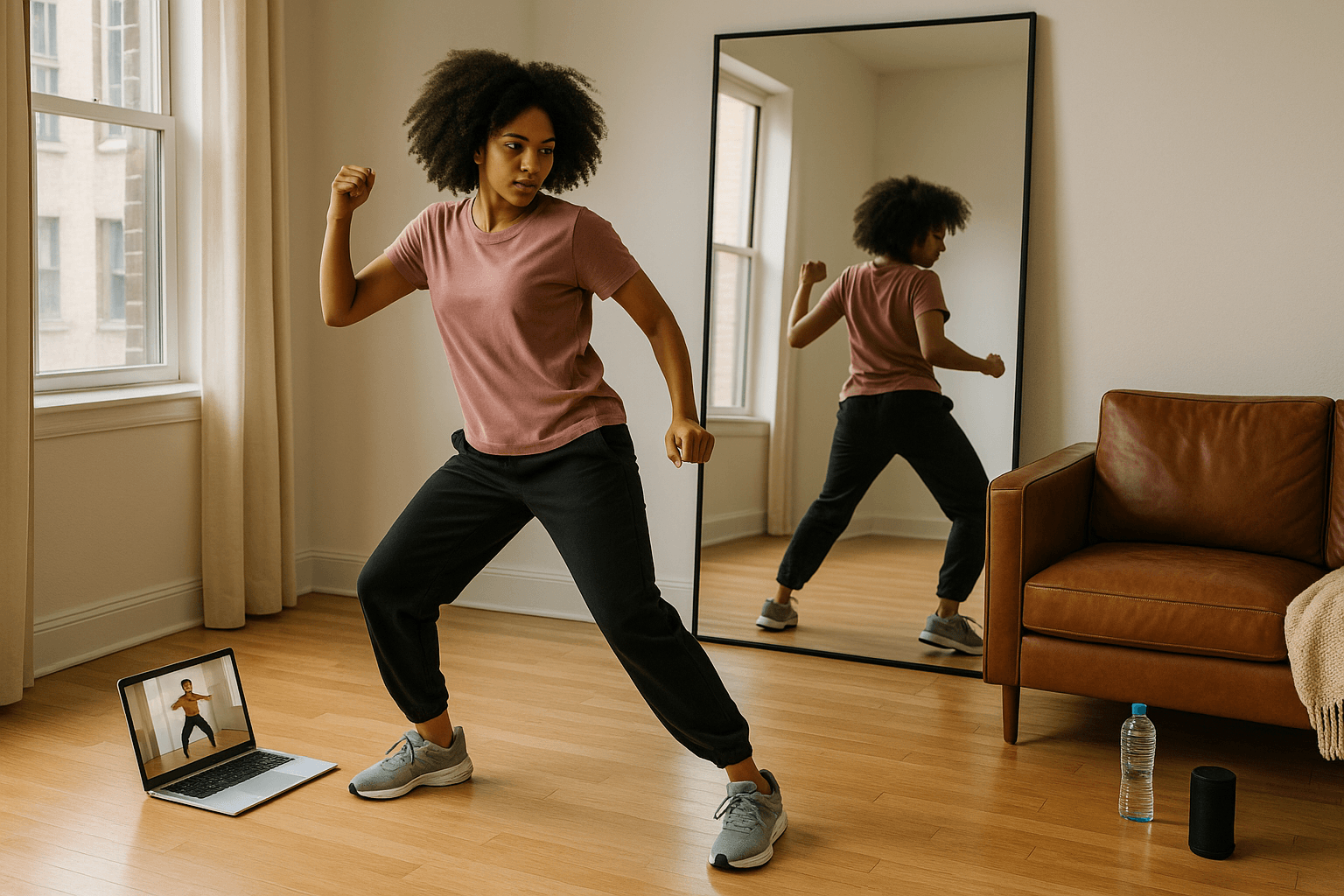 So you’ve got the moves in your head—but how do you get them into your body? Becoming a hip hop dancer is more than just mimicking steps. It’s about building rhythm, understanding the culture, and developing your own style. The good news? You don’t need a fancy studio or expensive gear to get started.
So you’ve got the moves in your head—but how do you get them into your body? Becoming a hip hop dancer is more than just mimicking steps. It’s about building rhythm, understanding the culture, and developing your own style. The good news? You don’t need a fancy studio or expensive gear to get started.
Can you train effectively without leaving your room? Absolutely. Hip hop dance form thrives on individuality, and many top dancers started with nothing but a mirror and determination.
Here’s how you can make your home your personal dance lab:
Consistency beats perfection. Even 15 minutes a day of focused practice can make a huge difference.
Did you know that hip hop dance exercise can burn up to 400 calories an hour? It’s not just fun—it’s functional. Many people choose it as an alternative to traditional cardio because it’s dynamic and engaging.
Here’s why it works:
Try incorporating hip hop moves into your regular fitness routine, or follow a dance-based workout app to keep things fresh and challenging.
Choosing how to train depends on your goals and lifestyle. Let’s compare the two options:
Learn at your own pace Access instructors from around the world Budget-friendly and flexible Great for shy beginners
Real-time feedback from instructors Group energy and community vibes Hands-on guidance for technique Easier to stay disciplined
If you're just starting out, online options offer a stress-free entry point. But if you thrive in a structured group setting, studios might suit you better.
You don’t need expensive outfits or gear to begin, but a few basics can make your practice smoother:
While there’s no official uniform in hip hop dance, what you wear should make you feel confident and ready to move.
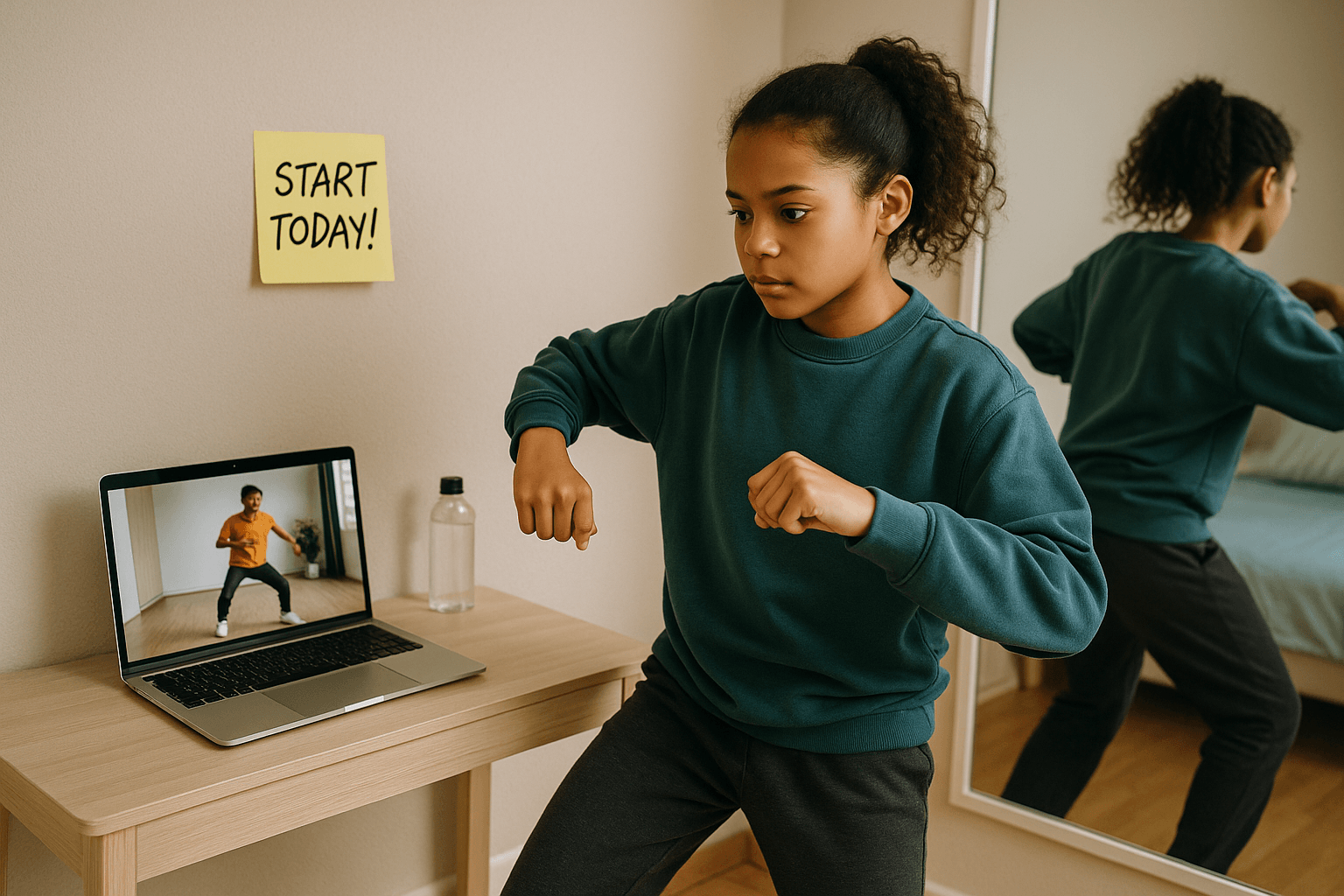 Thinking about taking your first step into hip hop dance? You don’t need to be an expert or have a background in dance to begin. All you need is curiosity, energy, and the willingness to have fun. Let’s break down how you can go from zero to dancing hero—one beat at a time.
Thinking about taking your first step into hip hop dance? You don’t need to be an expert or have a background in dance to begin. All you need is curiosity, energy, and the willingness to have fun. Let’s break down how you can go from zero to dancing hero—one beat at a time.
Starting anything new can feel intimidating, but hip hop is all about freedom and self-expression. Follow this simple roadmap to ease into the groove:
Pick Your Space Clear a small area at home with enough room to move freely. Wood floors or yoga mats work best.
Create a Playlist Build a high-energy playlist with beats that make you want to move. Music fuels your rhythm.
Start with Foundation Moves Focus on basic hip hop dance moves like the Two-Step, Shoulder Lean, and simple body isolations.
Follow Beginner Tutorials YouTube and online platforms are full of instructors teaching simple hip hop moves. Find one with a style you connect with.
Practice in Short Sessions 15–20 minutes daily is more effective than trying to master everything at once.
Record Yourself Watching yourself helps identify areas of improvement and build confidence.
Want to see progress fast? Focus on mastering the easiest hip hop dance moves that offer both fun and functionality:
These moves form the base of more advanced combinations and help you gain rhythm and control quickly.
Freestyle might feel intimidating at first, but it’s actually where you develop your true voice as a hip hop dancer. Here’s how to ease into it:
The key to freestyle dance is to stop overthinking. Let the music guide your movement. With time, your own style will emerge naturally.
Once you’ve built a foundation, don’t keep your talent locked indoors. Hip hop thrives on connection. Look for opportunities to engage with the community:
If you're unsure where to start, you can book a free trial class and get personalized feedback from trained professionals. Whether online or in-person, the right class can accelerate your growth and introduce you to like-minded dancers.
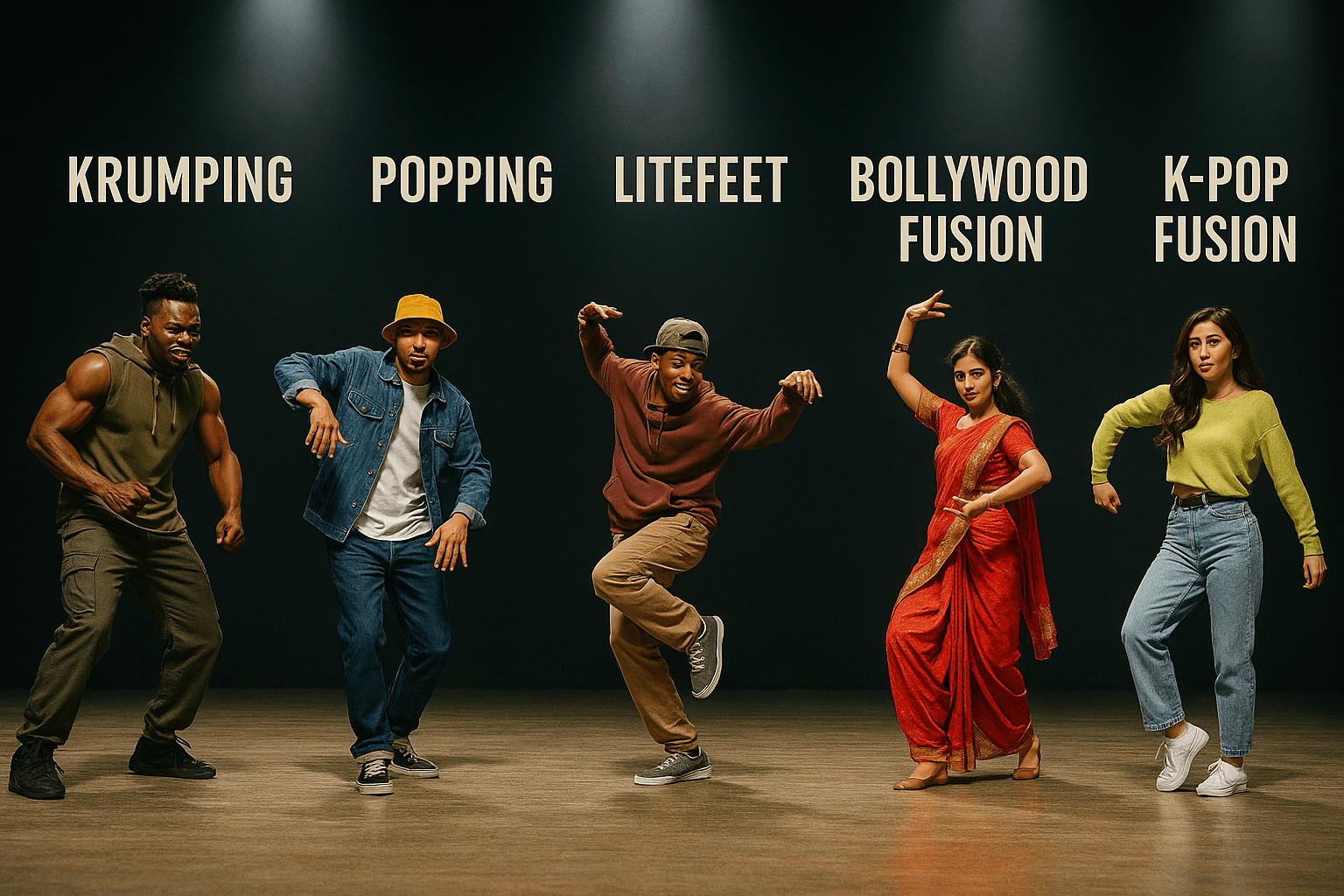 Did you know that hip hop dance isn’t just one style—it’s a vibrant collection of genres, sub-genres, and creative fusions? From the streets of New York to the dance studios of Tokyo, hiphop dance has branched out in incredible ways while keeping its soulful essence intact.
Did you know that hip hop dance isn’t just one style—it’s a vibrant collection of genres, sub-genres, and creative fusions? From the streets of New York to the dance studios of Tokyo, hiphop dance has branched out in incredible ways while keeping its soulful essence intact.
Whether you're new to the scene or looking to expand your movement vocabulary, understanding these styles of dance hip hop can help you find the one that resonates most with you.
While you may be familiar with popping and breaking, many newer styles have emerged with unique identities:
These genres may vary in form but are all deeply rooted in freestyle dance, creativity, and cultural expression.
When someone mentions hip hop dance styles, they're often referring to either old school or new school styles.
Both styles bring something valuable to the table—old school keeps the tradition alive, while new school pushes the boundaries.
One of the most inspiring parts of hip hop dance form is how it evolves globally. Different cultures have embraced and reinterpreted it, often blending it with local dance traditions:
Curious to explore how styles intersect? You can check out different forms of dance classes that offer a blend of global techniques, including fusion forms that pair hip hop with classical or cinematic dance styles.
Here’s a handy list of major hip hop dance genres every learner or fan should explore:
Each genre offers a unique experience and artistic challenge. Don’t be afraid to try different styles until you find the one that makes you move without thinking.
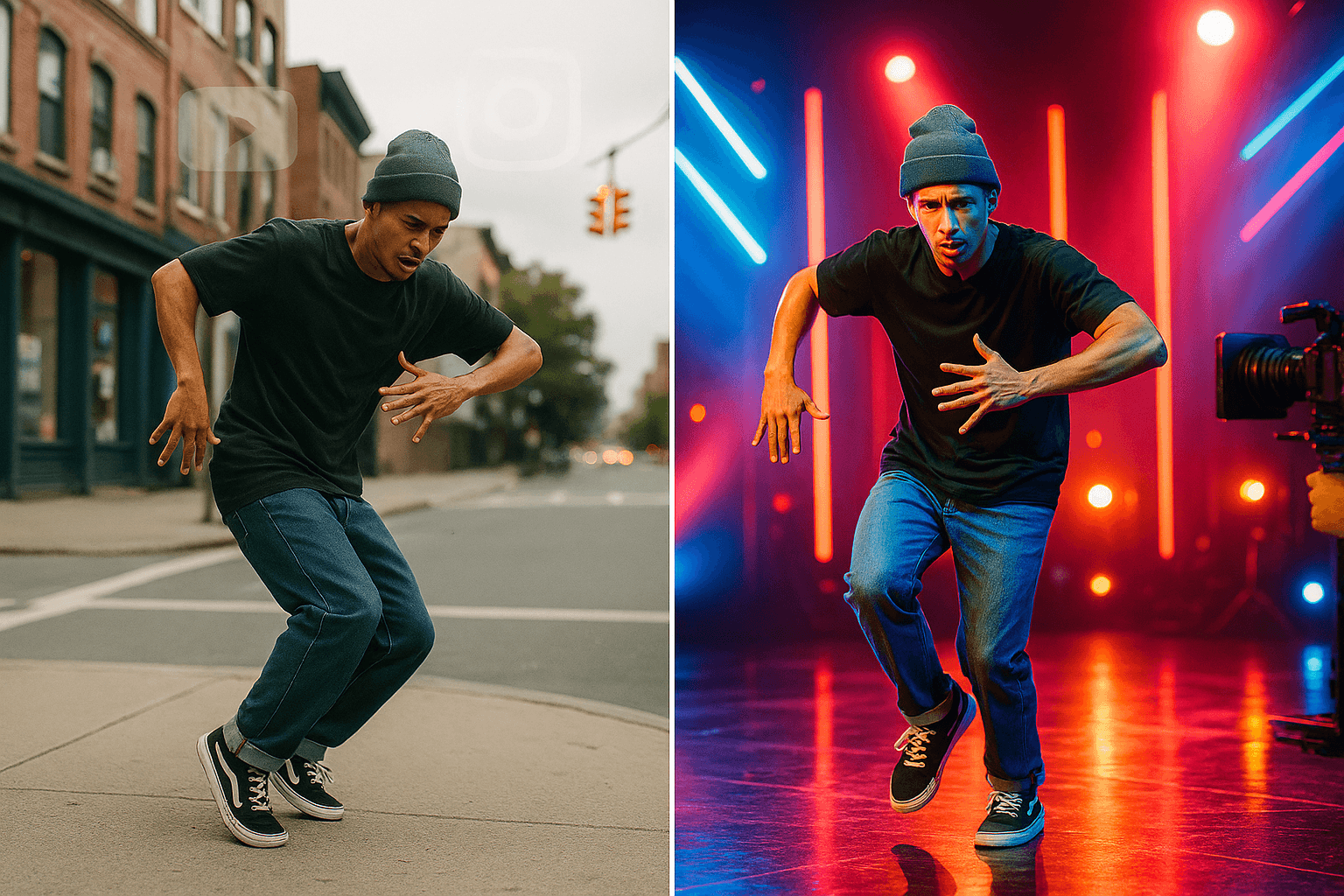 What started as a street movement has now become a worldwide phenomenon. Hip hop dance has infiltrated every corner of pop culture—music videos, movies, reality TV, fashion runways, and even social media trends. But what makes hip hop dancers such powerful cultural influencers?
What started as a street movement has now become a worldwide phenomenon. Hip hop dance has infiltrated every corner of pop culture—music videos, movies, reality TV, fashion runways, and even social media trends. But what makes hip hop dancers such powerful cultural influencers?
It’s more than just the moves—it’s the attitude, rhythm, and authenticity they bring to every performance.
From Michael Jackson’s "Thriller" to Beyoncé’s "Single Ladies," iconic music videos have used hip hop choreography to captivate global audiences. And let’s not forget choreographers like Parris Goebel, JaQuel Knight, and Les Twins, whose signature styles have redefined how dance is perceived on screen.
Today, commercial hiphop dance choreography sets the tone for trending reels, TikToks, and stage performances alike. This has led to an explosion in demand for hip hop dance classes near me—people want to move like their favorite artists.
In India, Bollywood has given hip hop dance in movies a massive platform. Stars like Hrithik Roshan, Tiger Shroff, and Varun Dhawan have brought street-style energy to mainstream cinema. With the rise of films like ABCD and Gully Boy, the fusion of dance hip hop with Indian cinema has sparked an entirely new genre.
If you're inspired by this blend, you might love exploring online Bollywood dance classes that combine cinematic drama with freestyle flair.
Shows like So You Think You Can Dance, India’s Best Dancer, and Dance Plus have given hip hop artists massive visibility. Meanwhile, Instagram and YouTube have become global stages where unknown dancers can gain followers, land brand deals, and go viral overnight.
This digital explosion has encouraged beginners to take up hip hop dance for beginners or join community battles and jams, knowing that every performance is just a camera away from global recognition.
Hip hop isn’t just about dance—it’s a lifestyle. From oversized hoodies and sneakers to bold accessories and expressive body language, the culture’s influence on fashion is undeniable.
Dance crews and solo performers often use their attire to complement choreography, enhancing storytelling through movement. In fact, the fusion of hip hop dance form and street fashion has even influenced athletic brands and high-end couture alike.
Feeling inspired yet? If pop culture has shown us anything, it’s that hip hop is for everyone. Whether you're dancing in your room, joining a class, or just vibing to your playlist, you’re part of a movement that celebrates self-expression and creativity.
And if you're ready to move from viewer to performer, it might be the perfect time to book a free trial class and start learning from professionals who live and breathe this dynamic art form.
Hip hop dance is more than just movement—it’s expression, identity, and culture in motion. Whether you're drawn by the high-energy hip hop dance moves, curious about the origins of hip hop dance, or simply searching for a fun and powerful way to stay active, this vibrant art form has something for everyone.
And the best part? You don’t need a fancy studio to get started.
With the rise of dance learning apps, online dance classes, and even hip hop dance lessons at home, your journey into this electrifying style can begin right now—right where you are. You can explore the basics, pick up signature styles, or even experiment with freestyle dance routines from the comfort of your living room.
So ask yourself—what’s stopping you from diving in?
Are you ready to feel the beat, own your rhythm, and become a part of one of the world’s most energetic dance communities?
If your answer is yes, then lace up, warm up, and start moving. Because in hip hop, every step you take tells your story. And your story deserves to be danced.
Let this be your sign—hip hop dance is waiting. Are you in?